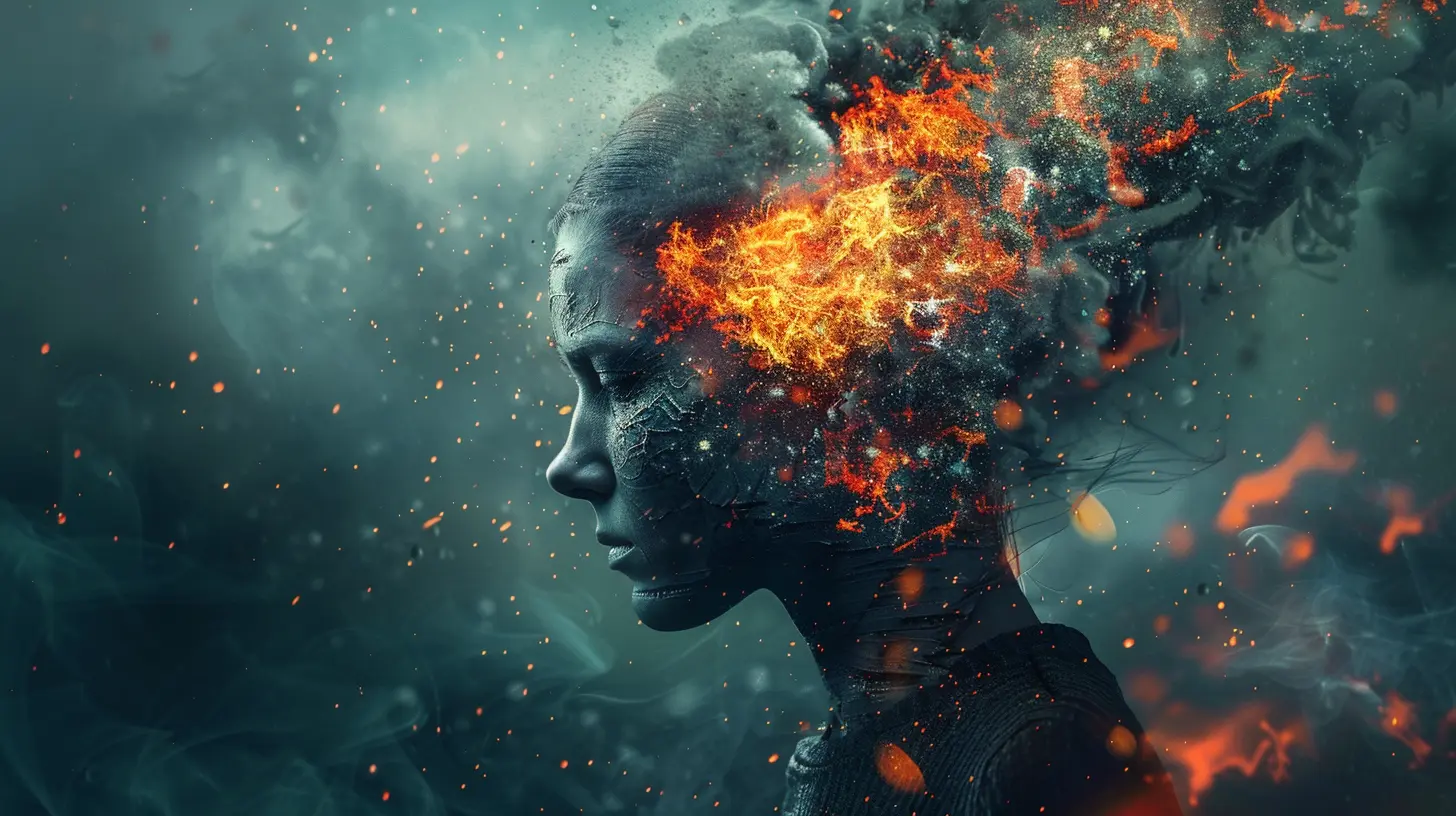PTSD and Physical Health: The Mind-Body Connection
3 June 2025
When we think about PTSD (Post-Traumatic Stress Disorder), we often focus on its emotional and psychological impact—flashbacks, anxiety, nightmares, and an overwhelming sense of fear. But what about the physical side? How does PTSD affect the body, not just the mind?
The truth is, PTSD doesn't just exist in your head. It seeps into your body, influencing your physical health in ways that many people don’t realize. The mind and body are deeply connected, and when one suffers, the other often follows.
In this article, we’re going to break down the fascinating relationship between PTSD and physical health. Let's dive into the ways trauma leaves a lasting imprint not just on emotions but also on your overall well-being. 
Understanding PTSD: More Than Just a Mental Battle
PTSD is a mental health condition that can develop after experiencing or witnessing a traumatic event. It’s not just about feeling scared or stressed; it’s a deep-rooted response that alters the way the brain and nervous system function. Common causes include:- Military combat
- Physical or emotional abuse
- Severe accidents
- Natural disasters
- Loss of a loved one
- Assault or violent attacks
People with PTSD often experience symptoms such as flashbacks, intrusive thoughts, emotional numbness, and heightened anxiety. But what many don’t realize is that trauma doesn’t just stay in the brain—it spreads throughout the body, too. 
The Physiological Impact of PTSD
1. Chronic Stress and the Body’s Alarm System
Imagine your body has a built-in alarm system designed to protect you from danger—this is your fight-or-flight response. When you face danger, your brain signals the release of stress hormones like adrenaline and cortisol. Your heart races, your muscles tense, and you get ready to either fight or flee.Now, what happens when that alarm system never turns off?
For people with PTSD, the body stays on high alert even when there’s no actual danger. This constant flood of stress hormones takes a serious toll on physical health, leading to issues like:
- High blood pressure
- Increased risk of heart disease
- Chronic muscle tension
- Weakened immune system
In other words, PTSD keeps the body trapped in “survival mode,” which over time wears down essential bodily functions.
2. PTSD and Heart Health
Did you know that PTSD has been linked to a higher risk of cardiovascular disease? Studies have shown that individuals with PTSD are more likely to suffer from:- High blood pressure
- Irregular heartbeats
- Increased inflammation
- Greater likelihood of heart attacks
Why? Because chronic stress triggers inflammation, damages blood vessels, and causes long-term strain on the heart. It’s like leaving your car engine running at full speed all the time—sooner or later, something is bound to break.
3. Digestive Disorders and Gut Issues
Ever had a “gut-wrenching” experience? That phrase exists for a reason. The gut and brain are closely connected, and PTSD can wreak havoc on digestion. Many individuals with PTSD report symptoms such as:- Chronic stomach pain
- Irritable bowel syndrome (IBS)
- Nausea
- Loss of appetite
- Acid reflux
This happens because stress hormones can disrupt the balance of gut bacteria, slow down digestion, and increase inflammation in the stomach lining.
4. Sleep Problems and Physical Exhaustion
Sleep and PTSD often don’t mix well. Nightmares, racing thoughts, and hypervigilance make it tough to rest, and the lack of quality sleep leads to a cascade of physical problems, including:- Chronic fatigue
- Weakened immune system
- Increased pain sensitivity
- Higher risk of diabetes and obesity
When the body isn’t given the proper time to rest and recover, everything starts to fall apart—like trying to run a marathon without ever taking a break.
5. Chronic Pain and PTSD
Physical pain and PTSD often go hand in hand. People with PTSD are more likely to develop chronic pain conditions, including:- Fibromyalgia
- Migraines
- Joint pain
- Muscle soreness
Why? Because prolonged stress causes muscle tension, leads to inflammation, and changes the way the brain processes pain signals. In some cases, the brain remains stuck in a pain loop, making even mild discomfort feel unbearable.
It’s a vicious cycle—PTSD causes pain, and pain worsens PTSD symptoms, creating a feedback loop that can be hard to break. 
Breaking the Cycle: Managing PTSD and Physical Health
So, if PTSD affects both the mind and body, how can you manage these symptoms? The good news is that healing is possible. Here are some strategies to help break the mind-body cycle of trauma:1. Therapy for the Mind and Body
Traditional talk therapy, such as Cognitive Behavioral Therapy (CBT), can help rewire negative thought patterns. Additionally, Somatic Therapy focuses on the connection between physical sensations and emotional trauma, helping to release stored stress in the body.2. Exercise and Movement
Physical activity helps regulate stress hormones and reduce inflammation. Activities like yoga, tai chi, and gentle stretching can help calm the nervous system while strengthening the body.3. Mindfulness and Meditation
Practices such as deep breathing, meditation, and guided imagery can help retrain the nervous system, encouraging relaxation instead of stress responses.4. Healthy Nutrition
A balanced diet rich in anti-inflammatory foods (such as leafy greens, berries, and omega-3 fats) can help counteract the physical effects of PTSD.5. Quality Sleep
Creating a bedtime routine, limiting screen time, and using relaxation techniques before bed can help improve sleep quality and allow the body to heal.
Final Thoughts
PTSD isn’t just a mental battle—it’s a whole-body experience. Trauma doesn’t just live in the mind; it settles in the body, causing real and lasting physical health issues. Understanding this connection is crucial for healing.If you or someone you love is struggling with PTSD, know that help is available. Addressing both the mental and physical effects of trauma can lead to better health, greater resilience, and a brighter future. You're not alone in this journey—healing is possible, one step at a time.
all images in this post were generated using AI tools
Category:
Post Traumatic Stress DisorderAuthor:

Janet Conrad
Discussion
rate this article
2 comments
Devin McLaury
This article insightfully highlights the crucial link between PTSD and physical health. Understanding this connection is vital for holistic treatment approaches and improving patients' overall well-being. Thank you for sharing!
June 3, 2025 at 4:22 PM

Janet Conrad
Thank you for your thoughtful comment! I'm glad you found the connection between PTSD and physical health insightful—it's essential for comprehensive care.
Reese Underwood
Exploring the mind-body connection in PTSD underscores the profound impact of mental health on physical well-being. Healing isn't just psychological; it’s a holistic journey that demands our attention.
June 3, 2025 at 3:59 AM

Janet Conrad
Thank you for highlighting the crucial interplay between mental and physical health in PTSD. Emphasizing a holistic approach is vital for effective healing.


